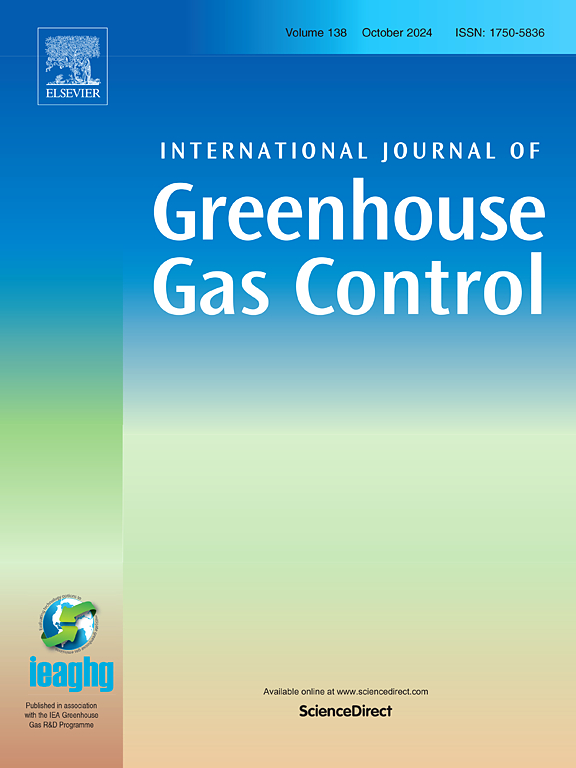CO2 invasion into the confining formations as a result of dry-out in the storage formation: Insights from numerical simulations
IF 4.6
3区 工程技术
Q2 ENERGY & FUELS
International Journal of Greenhouse Gas Control
Pub Date : 2025-02-01
DOI:10.1016/j.ijggc.2025.104313
引用次数: 0
Abstract
This study investigated the combined effects of dry-out in storage formation in the presence of confining formations on fluid flow during geological carbon sequestration. Numerical simulations demonstrated that dry-out significantly decreased the liquid pressure in the storage formation, and this led to a capillary-driven backflow of water from the confining formations to the storage formation, causing a gradual decrease in the liquid pressure in the confining formations. Finally, CO2 invaded the confining formations, despite the gas pressure buildup in the storage formation by CO2 injection being maintained below the capillary entry pressure of the confining formations. Long-term simulations demonstrated that invaded CO2 in confining formations can almost completely dissolve into unsaturated formation water after shut-in, indicating almost no long-term risk for safe storage or the effectiveness of structural trapping. Sensitivity analysis demonstrated that the permeability of the confining formations and maximum capillary pressure are crucial for controlling the quantity of CO2 invasion and that injecting CO2 from a deep section of the storage formation can prevent or sustain CO2 invasion into the overlying formation. These findings provide valuable insights for optimizing CO2 storage operations and ensuring the long-term stability of geological carbon sequestration.
求助全文
约1分钟内获得全文
求助全文
来源期刊
CiteScore
9.20
自引率
10.30%
发文量
199
审稿时长
4.8 months
期刊介绍:
The International Journal of Greenhouse Gas Control is a peer reviewed journal focusing on scientific and engineering developments in greenhouse gas control through capture and storage at large stationary emitters in the power sector and in other major resource, manufacturing and production industries. The Journal covers all greenhouse gas emissions within the power and industrial sectors, and comprises both technical and non-technical related literature in one volume. Original research, review and comments papers are included.

 求助内容:
求助内容: 应助结果提醒方式:
应助结果提醒方式:


